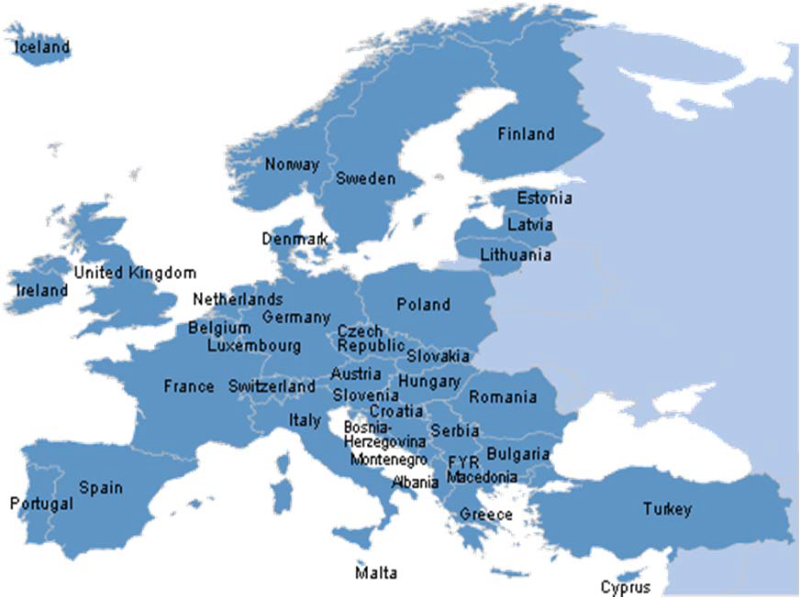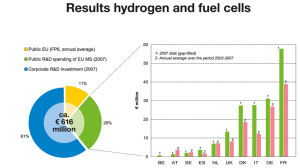Programme EMPIR
The European Metrology Programme for Innovation and Research (EMPIR lien vers le site EMPIR) has been developed as an integrated part of Horizon 2020, the EU Framework Programme for Research and Innovation. It is implemented by the European Association of National Metrology institutes EURAMET. It is based in Article 185 of the Lisbon Treaty.
Horizon 2020 aims to reinforce and extend the excellence of the EU’s science base and to consolidate the European Research Area in order to make the research and innovation system more competitive on a global scale.
The EMPIR programme has a duration of 10 years with 7 calls launched from 2014 to 2020. It is jointly funded by the EMPIR participating countries and the European Union (budget ~ 600 M€ over 7 years).

It enables the collaboration of European metrology institutes (EURAMET members), industrial organisations/research centres and academia. EMPIR Joint Research Projects (JRPs) from these calls will focus on priority areas to address the EU’s Grand Challenges in Health, Energy, Environment and Industry, and to progress fundamental measurement science.
New calls integrated the EMPIR programme in 2015: Pre‐ and co‐normative research, Support for Impact, and Research potential.
Standardisation call
The pre‐ and co‐normative targeted programme of EMPIR is aiming at providing timely metrology research to underpin the quality and help accelerate the development of a draft European or International standards. Metrology research will help those who develop and rely on documentary standards to:
- enhance industrial competitiveness
- enable and enhance trade opportunities for new emerging products, services and technologies
- support quality of life issues (climate change, environment, health care, consumer protection) through scientific rigor in support of regulation
More information at http://msu.euramet.org/calls.html
Background
 Horizon 2020 Research and Innovation programme encourages the decarbonisation of the transport sector in order to reduce the green‐house gases effect (European Directive on the deployment of alternative fuels infrastructure 2014/94/EU)
Horizon 2020 Research and Innovation programme encourages the decarbonisation of the transport sector in order to reduce the green‐house gases effect (European Directive on the deployment of alternative fuels infrastructure 2014/94/EU)
The Multi Annual Working Plan the FCH‐JU (renvoi) pointed out the expected hydrogenactivities “no simple methodology nor single instrumentation is available for low cost qualifications of hydrogen fuel. Today, the lack of harmonized RCS and PNR is a major barrier for the commercialization of FCH products”
A working group has been created within ISO/TC 197 (renvoi) in 2015 aiming at merging the ISO 14687 standards family for hydrogen fuel quality
A working group WG 25 “Hydrogen absorbed in reversible metal hydride” (renvoi) has been created within ISO/TC 197 aiming at improving the normative framework related to the ISO 16111 standard. Liaison with ISO TC 058 and CEN TC 268.
SFEM WG Hydrogen renvoi– Recommendation 60/2015 to create a Technical Committee covering the 5 TFs and the already critical issues to be addressed by European standardization new CEN TC 6 Hydrogen in Energy Systems.
Needs
It is stated that the hydrogen purity dispensed at hydrogen refueling points should comply with the technical specifications included in the ISO 14687‐2 standard. The rapid progress of the fuel cell electric vehicles and related technology will require revising this standard towards less constraining detection limits as mentioned directly in the standard. While ensuring the hydrogen specifications, the application of the revised standard through optimised validated analytical methods will enable a reduction in the number of required analyses.
 The increased transport and storage activities of hydrogen require the development of new and safe storage techniques for large quantities of hydrogen. The newly created working group (WG 25 “Hydrogen absorbed in reversible metal hydride”) within ISO/TC 197 aims at improving the normative framework related to the ISO 16111 standard “Developing Transportable gas storage devices ‐ Hydrogen absorbed in reversible metal hydride”. The last version of 2008 of the standard presents technical limitations for large storage and issues of implementation. The standardisation work in this working group requires broadening the scope of the current standard to larger hydrogen volumes through traceable methods for the measurement of the amount of hydrogen absorbed in the metal hydrides (MH). Currently, the different methods available (i.e. mass methods, mass and volumetric flowmeters) do not provide accurate results.
The increased transport and storage activities of hydrogen require the development of new and safe storage techniques for large quantities of hydrogen. The newly created working group (WG 25 “Hydrogen absorbed in reversible metal hydride”) within ISO/TC 197 aims at improving the normative framework related to the ISO 16111 standard “Developing Transportable gas storage devices ‐ Hydrogen absorbed in reversible metal hydride”. The last version of 2008 of the standard presents technical limitations for large storage and issues of implementation. The standardisation work in this working group requires broadening the scope of the current standard to larger hydrogen volumes through traceable methods for the measurement of the amount of hydrogen absorbed in the metal hydrides (MH). Currently, the different methods available (i.e. mass methods, mass and volumetric flowmeters) do not provide accurate results.
Objectives
This project aims at evaluating the probability of hydrogen impurity affecting fuel cells and developing analytical techniques for traceable measurements of the hydrogen impurity (research axes for the revision of the ISO 14687‐2 standard). Furthermore, it aims at developing and validating traceable methods to assess accurately the hydrogen mass absorbed and stored in metal hydrides (research axis for the revision of the ISO 16111 standard). The project will contribute to the
standardisation development works through presentations and informative or normative guides.
The objectives are:
- To develop hydrogen quality specifications for fuel cell vehicles, including tolerance levels for impurities in hydrogen and limits for the degradation of fuel cell performance as per ISO 14687‐2 ‘Hydrogen fuel ‐ Product specification – Part 2: Proton exchange membrane (PEM) fuel cell applications for road vehicles 2012’. This will include recommendations on maximum concentration of individual compounds based on the new fuel cell degradation studies and on the probability of presence.
- To propose optimised analytical protocols (including fit‐for‐purpose analytical methods) and assess an analyser that enables the implementation of ISO 14687‐2. The multicomponent analyser should have optimised sampling analysis and meet the required detection limits as per business plans ISO/TC 197 “Hydrogen technologies” 2005‐11‐07 and CEN/TC 268 “Cryogenic vessels and specific hydrogen technologies applications” 2014‐04‐04.
- To develop and validate traceable methods for measuring the hydrogen mass absorbed in storage tanks (hydrides AB, AB2 and AB5), with reference to ISO 16111 “Developing transportable gas storage devices ‐ Hydrogen absorbed in reversible metal hydride”.
- To contribute to the standards development work of key European and International Standards Developing Organisations ensuring that the outputs of the project are aligned with their needs, communicated quickly to those developing the standards and to those who will use them, and in a form that can be incorporated into the standards at the earliest opportunity.